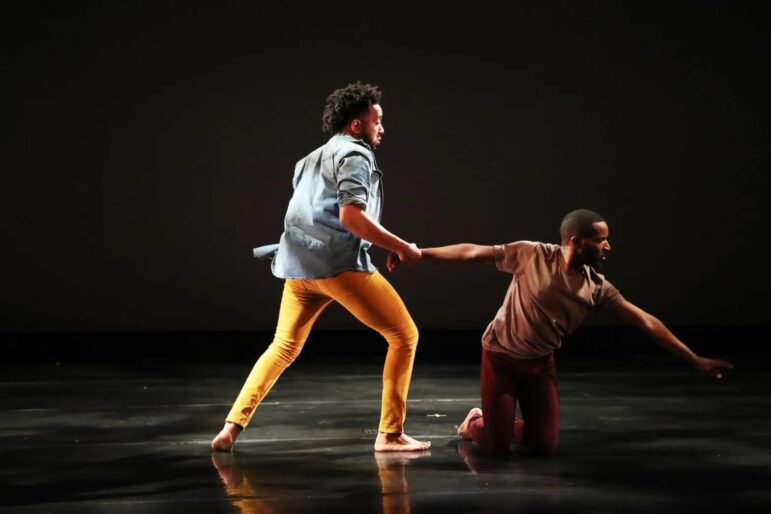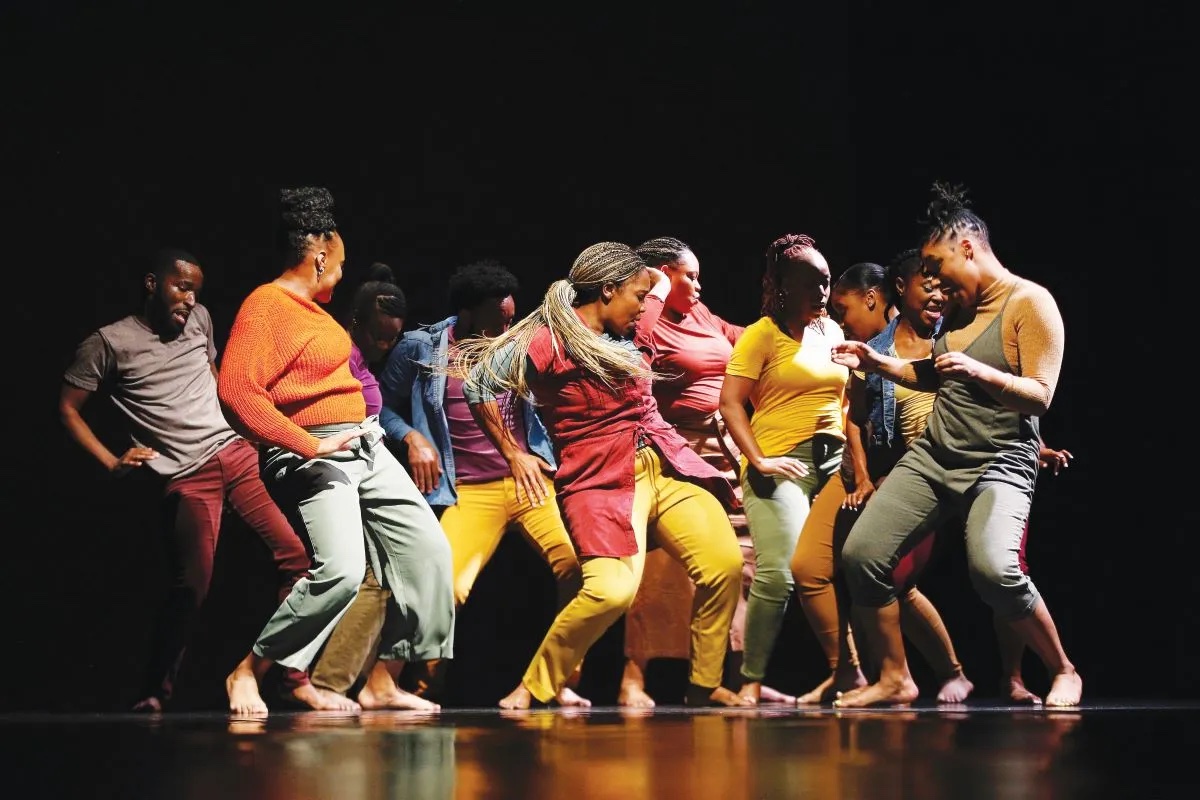Deborah Vaughan, co-founder and artistic director of Oakland’s Dimensions Dance Theater, has spent five decades enriching the lives of local youth by introducing them to the joy of dance and catharsis of physical expression. The company specializes in Western modern dance as well as traditional African dances, instilling a sense of cultural heritage along with lessons of physical self-awareness.
As the company prepared for performances on Oct. 21-22 for its 50th anniversary celebration, I caught a word with Vaughan about the importance of a mainstay company like hers, and how residents can rewrite popular misconceptions about “The Town,” which too often has been stereotyped as a crime-ridden wasteland.
How does a non-corporate arts company pull off a half-century lifespan these days, especially in the pricey Bay Area?
Deborah Vaughan: It’s a definite challenge for any company to span 50 years. It has taken a lot of blood, sweat and tears, but it has been well worth it. I also believe that the dancers, staff, families and board have a profound commitment to Dimensions’ mission and what it has meant to Oakland and the Bay Area. Seeing an art form that speaks to their culture means we are here.
I also think our travels, community outreach and being one of the original groups selected by Mayor Lionel Wilson to be at the Malonga Casquelourd Center for the Arts (MCCA, formerly the Alice Arts Center) has helped our organization to be recognized for its collaborations with local and international artists.
Oakland is often left out of the conversation about the Bay Area’s thriving art scene. With that in mind, how does one of the longest-running Black-owned dance companies hide in plain sight?
DV: It’s unfortunate to say, but this has been the plight of many Black dance companies: not being seen and recognized when you are not mainstream artists. I remember being questioned about how a dance company would use traditional and contemporary dance forms and use elements of theater — it was unthinkable! We were constantly being told, “Just choose one style!” I refused to do that. I also think that is what made Dimensions create its own path and distinguished us from other groups. Now, everyone is doing it! Hah!
Even today, Black dance pioneers like Alvin Ailey are rarely mentioned alongside the likes of George Balanchine or Isadora Duncan. What stands out to you when you think of Black people and the history of professional dance?
DV: What stands out to me is the beauty of specific movements that have originated from Africa and the Americas. Also, there are many dance forms that African-Americans and African-Caribbeans have contributed to the dance scene in America. Moreover, for centuries their influences have been overlooked and appropriated by others. The list of talented creatives goes on in music and dance for Black dance pioneers and professionals that shaped the dance field. In the coming years hopefully, new names will be written and become a part of a new history.
Black America is often thought of as having a tangential-at-best-connection to Africa. Since Dimensions specializes in both Western modern dance and traditional African dance, do you see a chasm between the two cultures or a bridge?
DV: I see a bridge. The bridge is different for every artist. I see it as a connection to who we are, our stories through movement and how the importance of the African Diaspora still matter.

What do young dancers typically look for when they first attend classes at Dimensions?
DV: We have our youth classes Rites of Passage, an accessible community-based after-school dance education at the MCCA, and Dimensions Extensions Dance Ensemble, our junior company and cultural ambassadors. We also have classes within [the Oakland Unified School District]. What we see in our youth is the joy and freedom to move, and their motivation to learn about the history of the dances they are studying. Adult dancers participate in our community and are interested in learning the dances, the history and often traveling to the countries that are associated with specific dance styles from Africa and the Caribbean.
What part of the process would you say they respond to the most?
DV: We meet youth where they are; many are interested in hip-hop and want to learn more about the roots and influences that are connected to the dances they are learning. Youth are also excited to go on field trips for cultural exposure, i.e., stage shows in San Francisco, dance camps, master classes and study tours.
We have weekly community classes that are attended by adults. These dancers come from all over the Bay Area and share a communal dance experience for joy, healing, stress relief and cultural connection. These classes also build audiences because these students want to see performances of the different dance styles they are studying.
When you stage full-length productions, what’s the typical reaction of the audience after seeing the merging of styles?
DV: Audiences are always amazed when seeing our performances, usually wanting to see more. Audiences today are wanting to see more diversity in terms of styles and cultural inclusion, especially since populations throughout the U.S. are becoming more diverse. Every culture wants to be recognized, so they are not seen as “other.” Also, I believe that the arts give audiences a better understanding of who we are, our likeness as people, and more insight of our cultural experiences.
Oakland is renowned for combining arts with activism. What responsibility, if any, do you think a teacher of the arts has to pass on a sense of social responsibility to their students?
DV: A teacher/artist is responsible for encouraging students to find their voices, how they see the world and what those students want to express through their creativity. My inspiration grew from the Black Arts Movement and how I became involved with the arts in my early teens. Each teaching artist has to listen and define their motivation and voice wherever it takes them. The voices of their students will speak to our future society and give those audiences another perspective of the world.
The cultural landscape of Oakland has changed radically lately – from people moving away to the departure of every sports team to shake-ups at City Hall. Does it still feel like fertile artistic ground to you?
DV: Yes, even though Oakland and the Bay Area have many challenges [with] housing, space to create, spaces to perform [and being] so expensive to be here! However, creativity abounds, and it is unstoppable, [so] artists will find a way to express their creativity and make it happen. Artists will always want to reflect and respond to what is going on in their environment. It’s one of the things that drives innovation and creativity: making a way out of no way.
What can people look forward to from Dimensions in the coming years?
DV: I look forward to new voices for creative expression through collaboration with other artists, a building that continues to be a home, a nationally recognized gem for the company and all its programs, an opportunity to not just survive but to thrive and remain connected to our communities in Oakland and beyond.
After 50 years of dancing in the East Bay, what would you say is the company’s greatest accomplishment?
Every accomplishment has been a feat… not quite sure which has been the greatest. One is giving voice, opportunities and space for the next generation of dancers and choreographers [and] students for creative expression — and there are plenty of them!
What’s been the most important lesson learned?
I’ve learned that anything and everything is possible, it just takes faith and a tremendous amount of work. My wish is that everyone recognizes and understands the transformative power of the arts. How even dance can also open hearts and minds, heal and uplift humanity.
Dimension Dance Theater’s 50th anniversary repertory concerts “Looking Back Moving Forward” are at 7:30 p.m. Oct. 21 and 4 p.m. Oct. 22 at Malonga Casquelourd Center for the Arts, 1428 Alice St., Oakland. Tickets are $15-$100 at dimensionsdance.org.
